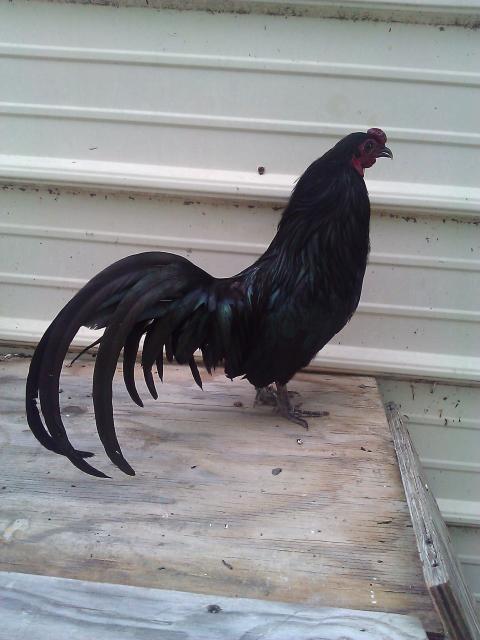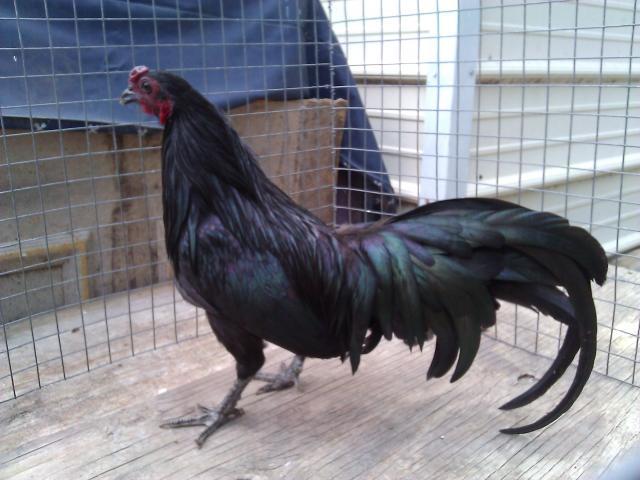I just noticed I havent posted on this thread yet and Tim has. We have had sumatra in largefowl and bantam for the better part of 10 years now. We sold the largefowl flock this summer but still have a dun pair. At the moment we have alot of bantam sumatras, a total of 5 blue hens, 8 black hens, 2 black roosters, a hand full of black chicks that were accidents thanks to the broodies in the barn, and an old pair which doesnt count since they arent breeding anymore.
Almost all of our bantams are from Myron Berger with the exception of a few hens we got from other sources. The main cock we will be breeding from this coming year has a nice long back, good tail, and 4 spurs per leg in addition to the bright yellow bottoms and good face/comb. He will be the foundation sire of the 'mini largefowl' project. I dont like the look of the bantam sumatras these days, they tend to be too cobby and fat with bulging eyes, just dont look right. We have been able to get a few good hens to put with this rooster that all look just like largefowl (long legs, sleek heads, great tails, nice slick body) but are bantam size. The other hens will be put with the rooster too to try to improve the type more.
The dun pair we have are more ideal type largefowl sumatras. Way back when we first started with largefowl sumatras we had the Schock & Berger lines that were amazing. Over time we added in some blues that I think traced back to McKinney & Govero. From there the line started to go down hill some. Whatever they crossed in to get the blue color threw the type all off. It made them look too loose feathered. We got a blue cock bird with tons and tons of spurs and a nice long tail but he brought in 'wrinkled' tail feathers. When we bred him into the flock the wild look went away for a couple generations, it just made them look too domestic, its hard to describe. We got a dun hen last spring from a friend who had it show up in some of his projects, we love the chocolate color (goats, rabbits, wyandottes, etc) so had to have it in sumatra. We bred her to a good black rooster and got a hand full of chicks but not much survival with them. When the largefowl flock got sold we kept the dun hen and stuck all the largefowl eggs under some broodies. The only one that hatched was a dun chick and it turned out to be a cockerel which is great, we can still get blacks from them and might use him to make some dun bantams by putting him on some tiny black hens.
One thing I dont like about sumatras is the way they are heading. I see so many sumatras that judges are placing at the best of show level and just shake my head in disgust. They are huge bulky birds. In my mind I think sumatras should look more wild and gamey like they did even 10 years ago. The birds that judges are placing and as a result people are breeding towards are big bulky monsters that have loose feathering, poor yellow bottoms, small eyes, square heads, short thick legs, and weigh double what they are supposed to. I dont know if its due to people starting with hatchery birds or going with the whole 'bigger is better' or 'its what the judges are placing so it must be good' kind of thing but I will keep breeding the birds to the standard and to what I think looks right, hopefully this phase will pass like the bunny tailed wyandottes a few years back did.
I will try to upload some pics before too long









